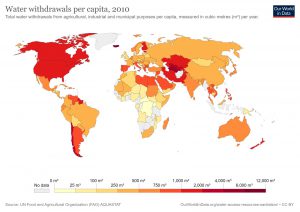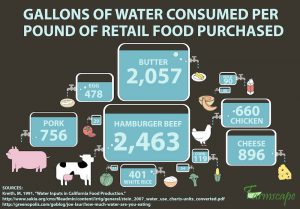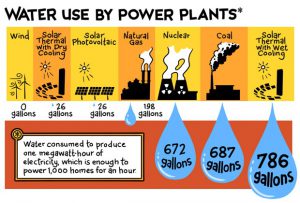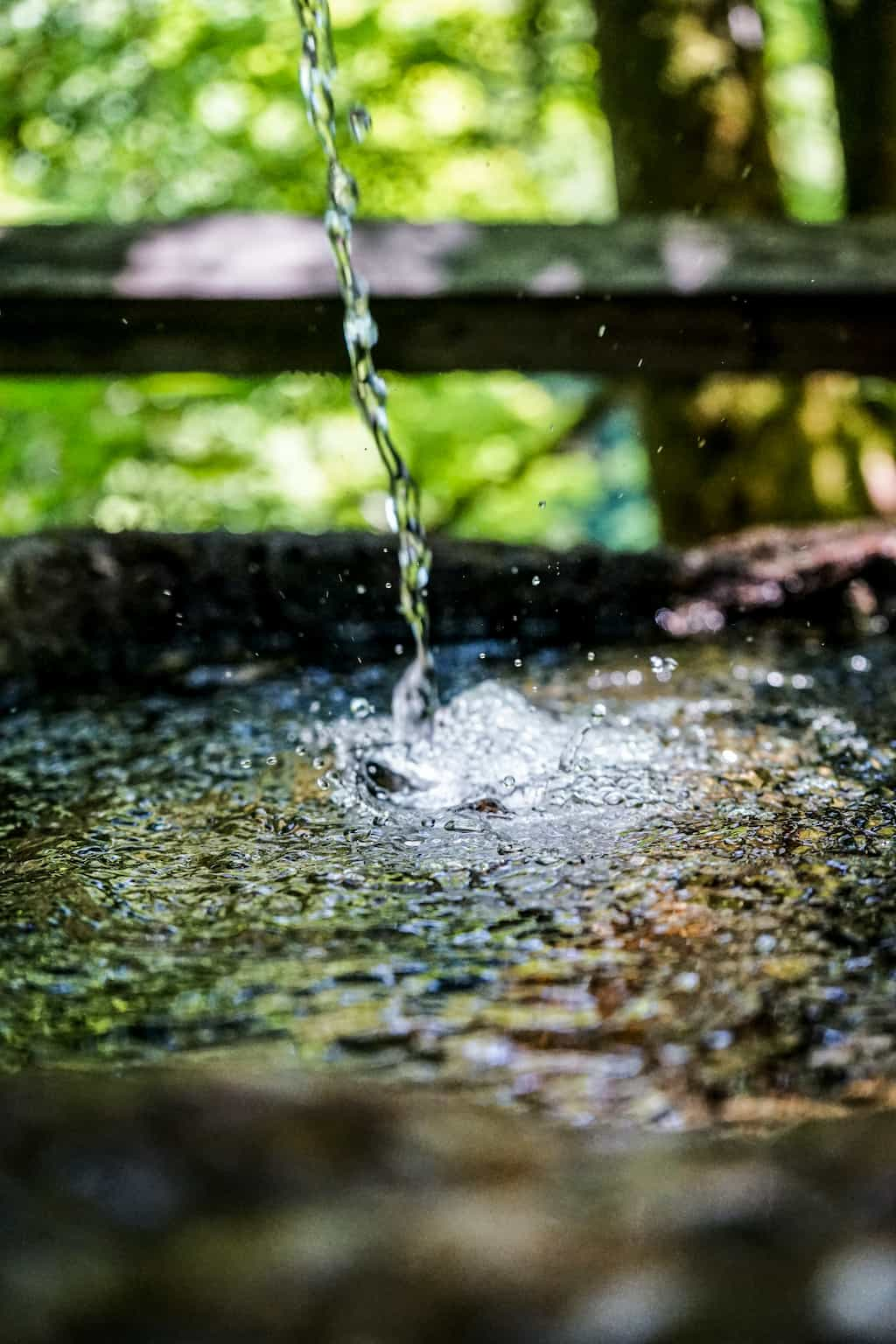 The increasing demands placed on the global water supply threaten biodiversity and the supply of water for food production and other vital human needs. Water shortages already exist in many regions , with more than one billion people without adequate drinking water. Agriculture consumes about 70% of freshwater worldwide; for example, approximately 1000 L of water is required to produce 1kg of cereal grain, and 43,000 L to produce 1kg of beef. Growing feed crops for livestock consumes 56% of water in the US. Agriculture is responsible for around 80% of deforestation as well. But why is related water to deforestation? Here is the answer:
The increasing demands placed on the global water supply threaten biodiversity and the supply of water for food production and other vital human needs. Water shortages already exist in many regions , with more than one billion people without adequate drinking water. Agriculture consumes about 70% of freshwater worldwide; for example, approximately 1000 L of water is required to produce 1kg of cereal grain, and 43,000 L to produce 1kg of beef. Growing feed crops for livestock consumes 56% of water in the US. Agriculture is responsible for around 80% of deforestation as well. But why is related water to deforestation? Here is the answer:
Firstly, healthy forests release a range of volatile organic compounds that “have an overall cooling effect on our climate,” mostly by blocking incoming solar energy. Meanwhile, lost forests are usually replaced by agriculture, which produces its own emissions. Add in these impacts and the real contribution of deforestation to global climate warming since 1850 is as much as 40%. At that rate, tropical deforestation could be 2100 – even if we shut down fossil fuel emissions tomorrow. But there are local effects, too. Forests moderate the local climate by keeping their local environments cool. A single tree can transpire hundreds of liters of water in a day. Every hundred liters has a cooling effect equivalent to two domestic air conditioners for a day.
 The forests cause the rainfall, and if they were not there the interior of these continental areas would be deserted.
The second biggest water consumer is the industry. For example, roughly 90% of the energy we use today comes from nuclear or fossil fuel power plants, which require 190 billion gallons of water per day, or 39% of all U.S. freshwater withdrawals.
Wet-cooled concentrated solar power plants use slightly more water than coal and natural gas; however, concentrated solar power plants can be designed to use dry-cooling, thereby reducing water demand by more than 90%. Additionally, solar thermal produces zero carbon emissions.
The forests cause the rainfall, and if they were not there the interior of these continental areas would be deserted.
The second biggest water consumer is the industry. For example, roughly 90% of the energy we use today comes from nuclear or fossil fuel power plants, which require 190 billion gallons of water per day, or 39% of all U.S. freshwater withdrawals.
Wet-cooled concentrated solar power plants use slightly more water than coal and natural gas; however, concentrated solar power plants can be designed to use dry-cooling, thereby reducing water demand by more than 90%. Additionally, solar thermal produces zero carbon emissions.
 How much water does it take to produce our belongings?
How much water does it take to produce our belongings?
- 13725 L for one pair of leather shoes
- 12075 L for smartphones
- 2460 L for one cotton t-shirt.
- 132 L for one cup of coffee
- 43 L to make 1kg of plastic. (And twice more for the plastic bottles.)
